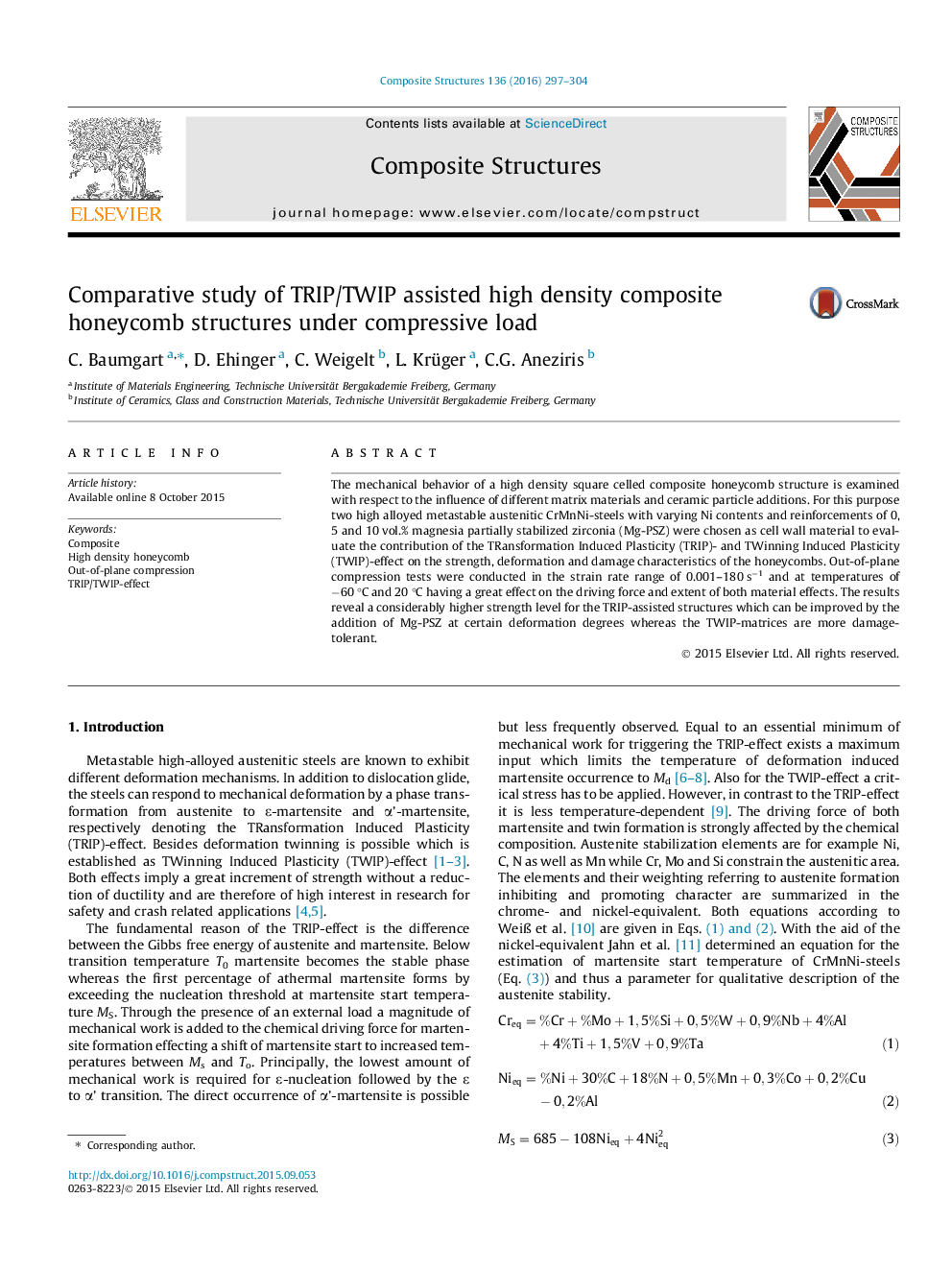| Article ID | Journal | Published Year | Pages | File Type |
|---|---|---|---|---|
| 6706354 | Composite Structures | 2016 | 8 Pages |
Abstract
The mechanical behavior of a high density square celled composite honeycomb structure is examined with respect to the influence of different matrix materials and ceramic particle additions. For this purpose two high alloyed metastable austenitic CrMnNi-steels with varying Ni contents and reinforcements of 0, 5 and 10 vol.% magnesia partially stabilized zirconia (Mg-PSZ) were chosen as cell wall material to evaluate the contribution of the TRansformation Induced Plasticity (TRIP)- and TWinning Induced Plasticity (TWIP)-effect on the strength, deformation and damage characteristics of the honeycombs. Out-of-plane compression tests were conducted in the strain rate range of 0.001-180 sâ1 and at temperatures of â60 °C and 20 °C having a great effect on the driving force and extent of both material effects. The results reveal a considerably higher strength level for the TRIP-assisted structures which can be improved by the addition of Mg-PSZ at certain deformation degrees whereas the TWIP-matrices are more damage-tolerant.
Keywords
Related Topics
Physical Sciences and Engineering
Engineering
Civil and Structural Engineering
Authors
C. Baumgart, D. Ehinger, C. Weigelt, L. Krüger, C.G. Aneziris,
